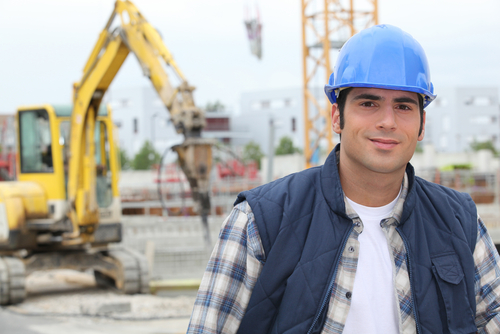According to statistics recently released by OSHA, one out of every five workplace fatalities that occurred in the U.S. last year involved a construction worker, making construction one of the most dangerous industries in the country from a worker-safety standpoint. And that doesn’t begin to take into account the thousands of construction workers who are injured every year while on the job.

OSHA reports most construction worker injuries and fatalities occur as a result of what they call the “Fatal Four”: falls, which in 2014 accounted for almost 40% of construction worker deaths; electrocutions, which made up about 8.5% of deaths; being struck by an object, which accounted for about 8.4% of deaths; and deaths that occur when being caught in-between objects, which comprised about 1.4% of construction worker deaths.
According to a survey conducted recently by the Associated General Contractors of America, construction worker injuries are on the rise in part thanks to a shortage in the number of skilled and available workers. That survey found 15 percent of construction firms reported an increase in the number of OSHA-reportable injuries and illnesses as a result of the shortage.
Here are four simple things your construction company can do to help keep your workers safe:
- Study up: OSHA offers plenty of guides and other training materials on its website to ensure your company remains compliant and your workers remain safe. Take advantage of these free resources to identify steps and practices your company can implement right now and over time to reduce the risk of workplace injuries.
- Label everything: Use signage, tape and other materials to clearly designate dangerous areas and to highlight operational instructions and rules as needed to increase worker awareness.
- Monitor regularly: Conduct routine checks to ensure workers are wearing protective gear and adhering to important rules, especially when operating machinery or when working around machinery that’s in use.
- Review and educate: Conducting regular training and “refresher” sessions ensures workers are up-to-date on safety practices and also helps your company stay in compliance. Keep a calendar posted of all upcoming courses and make sure workers understand that they need to attend.
OSHA guidelines and resources on their website provide plenty of information about how to help prevent injuries while on the job, including a selection of videos demonstrating how injuries occur. To learn more about preventing construction site injuries, visit the OSHA website, and call Atlantic Pacific to ensure you have all the insurance coverage you need to keep your workers and your business safe and sound.
Categorised in: Uncategorized